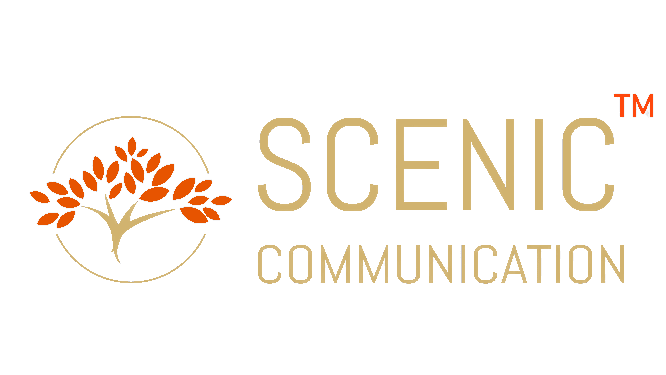Organic Media VS Paid Media, Which Is The Best To Reach Your Audience?

Even as the modern media landscape evolves to go beyond the boundaries of the physical world and embraces an almost ubiquitous virtual universe of the 21st century, consumer engagement touchpoints and the way brands engage with their stakeholders are dynamically changing. With the rise of the social media influencers, keywords, SEO, and the digital media ecosystem (with algorithms and AI), traditional means of ATL and BTL promotions and PR, are all being re-defined. However, from a brand point of view, the debate continues to rage around the age-old ‘earned Vs. paid media engagement, and the need to understand this is now even greater than ever before!
Let us start by understanding simple definitions:
Organic media is any marketing approach in which you do not spend to advertise — and it has two components:
- Owned media, or any medium over which a brand has ownership and is not required to pay for basic usage. Blogs, social network web pages, and webpages are examples of common channels.
- Earned media is digital word-of-mouth supported by mentions, shares, reposts, reviews, or other content curated by a third-party publisher.
The benefits of owned media
- Builds relationships with prospects and customers: Readers may simply refer to and share useful material on your website.
- Cost-effective: Owned content generates three times the number of leads per dollar spent as sponsored search.
- Adaptable: Owned media may be whatever combination of material your audience chooses, allowing teams to be flexible in new trying orts without spending money.
The benefits of earned media
- Trusted:It’s no surprise that sponsored advertisements are less believable than earned ones. In fact, viewers consider earned media to be the most genuine type of promotion.
- Motivator for Purchase:Prospects worldwide prefer word-of-mouth (64%) and customer recommendations (49%) over media articles and salespeople when making business software purchase decisions.
- Transparent:Earned media is more authentic than bought or owned media since it is supplied willingly by customers.
Paid media, on the other hand, refers to any marketing strategy that involves paying to promote content on a third-party channel. Search, social, display, PPC, native, and other channels are common.
Paid media begins with deciding what action you want a viewer to take. In its most basic form, paid media drives people to an unpaid piece of media with a specific aim in mind. Paid promotion examples include content promotion, retargeting advertisements, and native advertising, all of which may generate earned media, improve awareness/traffic, and drive money.
The benefits of paid media
- Paid media has instant effects: Once you pay for placement, your content will reach more readers faster.
- It’s scalable:Because of the low cost and high effectiveness of social media platforms, you may reach as many or as few people as your budget allows.
- You have complete control over paid media:You have complete authority over your content.
Now, as Paid and Earned media gamut are merging, brands no longer have a demarcated choice that can help them succeed. Instead, they need to be open to collaborative, earned and paid media mix for impactful brand building. Brands and marketing managers need to now re-strategize their market approach and change how they generate and market information to stakeholders. To successfully explore potential paid channels, one needs to focus on content with a virulence factor or messaging that can strategically direct consumers to the owned media touchpoints.
For better impact, building a well-rounded media plan that includes earned, owned, and paid media is the key. Here are some ideas for a well-thought-out strategy:
- Determine the goal of your campaign: Your purpose decides where you’ll spend your paid media budget.
- Create well-researched and valuable material to promote: Determine the subjects in your niche do well, their structure, and the keywords your target audience uses to find them.
- Begin small and spend more on what works: Run campaigns for at least 2–3 months to have a better understanding of what helps you reach your goals and what you can get rid of.
- Paid media should be used to supplement owned and earned media: A high-performing post not only boosts organic growth, but it may also act as an intriguing paid ad. It can help prospects and influencers receive highly tailored material more quickly.
Because of the shift in paid and organic media, businesses must reconsider how and what content they will promote. Due to the aforementioned variables, it is doubtful that simply organic content will assist enhance exposure, mentions, and income. If you want to build interest in your product or service, you must increase paid expenditure in a lucrative and approachable manner.
Why Scenic Communication?
DIGITAL PR & MARKETING SOLUTIONS FOR INDIAN STARTUPS AND BUSINESSES
We have created a distinctive advantage by giving holistic and Integrated Marketing Communications solutions to our client’s needs. Best PR Agency in Mumbai – Scenic Communication, therefore takes pride in not only providing effective public relations solutions to a brand but also with its girth, width and penetration, provide integrated communications solutions to the brand objectives of a client. With our strategic alignments and specialists on board we have geared innovation and value creation into all aspects of Brand & Reputation building. Having had domain expertise in multi-dimensional categories like – Corporate & Finance, Education, Real Estate, Infrastructure, Automobiles, IT & ITES, Government Development Boards, Tourism & Hospitality, Retail, FMCG, Fashion and the Entertainment industry; we provide innovative communications programs that focus on tangible business results.
Visit Scenic Website : https://sceniccomm.in/
3 Comments
Comments are closed.



The Role of PR in SEO: How Public Relations Can Boost Organic Search Rankings
May 20, 2024[…] Authority and Trust: Securing media coverage through PR initiatives helps establish your brand as an authority in its industry. When users see your brand mentioned in […]
Unraveling the News Media Mosaic: Understanding the Diverse Tiers of Media Outlets and Their Impact from an Indian Perspective
May 20, 2024[…] we consume, whether from mainstream media, digital natives, or hyper-local sources. Developing media literacy skills allows individuals to navigate the diverse tiers of media outlets, ensuring a […]
Unpaid or Earned Media: Building Credibility and Trust through Public Relations
May 20, 2024[…] the realm of public relations, earned media reigns supreme as a powerful tool for brand recognition, reputation building, and audience […]